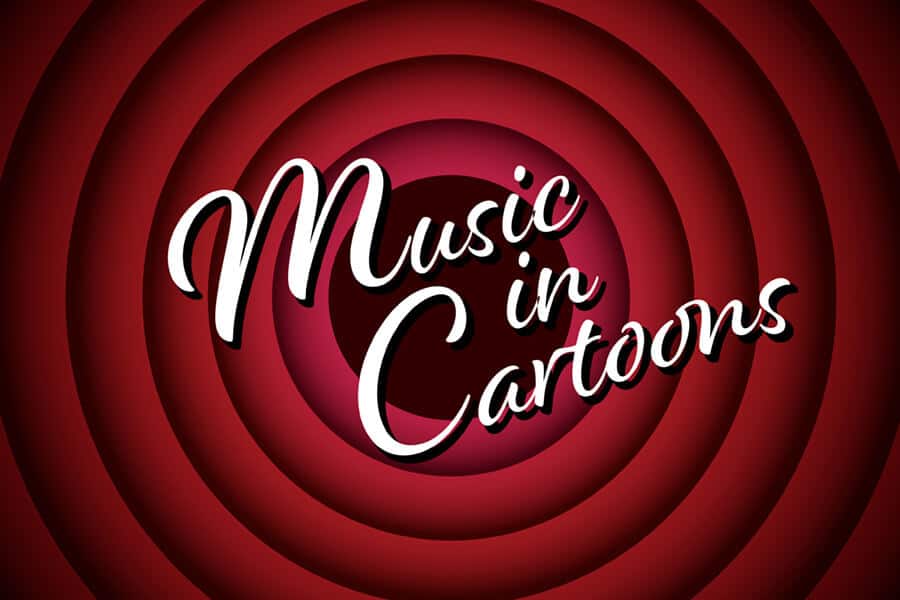Animated movies will always be a family favourite. Through the world of cartoon, music is amplified in ways it never has been. Through classic films of the 1930s, to the modern animated films that continue to bring us joy, music is at the forefront for all things entertainment.
It feels like it was just yesterday when I would wake up on a Saturday morning with eagerness and excitement. When I was younger, weekends were filled with fun adventures and care-free outdoor activities. However, Saturday mornings were a bit different. As I cuddled up on the fluffy couch facing the television screen – of course cereal in hand – I carried on my tired morning with classic cartoons. Cartoons are some of the first memories for children in terms of television interaction.
With the bright vivid colors, to the hilarious banter of animated animals, cartoons were the essence of childhood. What paired perfectly to these entertaining acts of craziness, was its impeccable music. From classics such as Looney Tunes to the Bikini Bottom adventures of SpongeBob SquarePants, the music captivated the experience even more. Cartoon music is and will always be one of the greatest musical entities in the world.
The Origins of Cartoon Music
Music for animation purposes has developed over the years since its origins in silent films. Music historian, Daniel Goldmark, always had an ear for music. Catchy songs that sparked his interests were found from various cartoons he stumbled upon throughout his childhood. It was cartoons that introduced him to the swinging sounds of jazz, the traditional sounds of American folk music and the dramatic sounds of Viennese opera. His love for music and cartoons, led him to carry on his study of music throughout his twenties as he studied various aspects of music including Schubert’s Die Erikonig. The historian later became the Assistant Professor of Music History at Case Western Reserve University in the US city of Cleveland, Ohio. The historian published Tunes for Toons – a book examining music written during the highlighted age of Hollywood cartoons during 1930s to the 1950s
In his findings – according to AnimatedWorldNetwork.com – he found that many musicians viewed cartoon music as too “simplistic” and only conducted sounds parallel to the animation’s happenings in the scene, which coined the phrase ‘Mickey Mousing’ in the 1930s. However, the songs used within the animations were popular songs at the time because of the American perspective. Songs such as Old MacDonald, and popular music scoring from live actions movies such as The Varsity Show, brought cultures together almost effortlessly.
A notable figure in animation music, innovated the sounds of animated musical scoring and composing. Composer Carl Stalling began playing piano in 1904 for reel changing at his local movie house in Missouri. In the mid 1920s, the musician became an orchestra leader while improvising for short films. Filmmaker Walt Disney worked alongside the talented musician as he scored cartoon music for Disney’s Plane Crazy and Gallopin Gaucho in 1928. By creating the ‘click track’ system, which allowed members of the orchestra to hear a steady beat, allowing them to synchronize the music to the actions of the film. Stalling continued to work for Disney, as well as Warner Bros., until his retirement in 1958. His work along with others would lay a blueprint to all things cartoon music.
Disney Music

Disney movies have been a polarizing entity in cartoon music for decades. It is through the working of Walt Disney that the animated world became so popular for children and families across the world since the creation of Mickey Mouse in 1928.
From popular songs such as Aladdin’s ‘A Whole New World’ to Frozen’s ‘Let It Go’, Disney has the blockbuster blueprint for all things animated music. On November 13th, 1940, Disney’s Fantasia hit the animation world with a beautiful force. The premise consists of various short films utilizing the sounds of orchestral music. The Sorcerer’s Apprentice is widely notable for Mickey Mouse’s blue sparkled hat paired with his oversized red magic robe. However, the music speaks to the intensity of the various scenes. As a child this was one of my first interactions with classical orchestral music and its becomings.
In 1989, Disney’s The Little Mermaid became an instant classic for cartoon lovers everywhere. Based on the Dutch fairy tale, the movie follows a young mermaid who yearns to live as a regular human being. Through monumental music and beautiful scenes of underwater animation, the movie was nominated for three Academy Awards the following year. The song Part of Your World (composed my musical genius Alan Menken) summarizes the young mermaid’s desire for a different life. Sung by Jodie Benson, the song has captivated hearts ever since.
Listen to Part of Your World from Disney’s The Little Mermaid Now!
Ну, погоди!

Russian Cartoon Ну, погоди! (Well, Just You Wait) is a Russian animated series produced by Soyuzmultfilm. The series hit television screens in 1969, and since then, the show has been ever popular, voted the people’s favorite cartoon/animated series of all time by a 2014 Russian poll.
The series follows a mysterious, clumsy, and very stylish Wolf as he tries to catch the cute Hare. The hero vs villain dynamic may seem like American cartoon, Tom and Jerry, however, the show has enticed me with its amazing musical scoring. According to Wikipedia.com, the memorable tunes were edited directly from international lounges and dance records of the 1960s to 1980s. Artists such as Chico Buarque, Leroy Holmes, James Last and Russian composer Yuri Mikhailovich Antonov, were heavily incorporated into the musical sound of the popular cartoon.
From this perspective, the show endured a variety of different elements of music. From the beginning of the cartoon’s existence, one can notice the heavy change of music through its lifespan. For example, the heavy orchestral sounds, similar to the earlier American cartoons, started to shift to dance/techno personifications in the 1980s. The show remains a staple of cartoon perfection.
Listen to Get up Action from T.V Show Ну, погоди! Now
The Bottom Line
Through the musical stylings of various animated shows, the child at the heart everyone will always live on. Cartoon music is just another example of how powerful music can be. By narrating various scenes in form of song, it is music that continues to bring people together.
Enjoyed this dive into cartoons? Read more about it through a different lens here:
Support us!
All your donations will be used to pay the magazine’s journalists and to support the ongoing costs of maintaining the site.
Share this post
Interested in co-operating with us?
We are open to co-operation from writers and businesses alike. You can reach us on our email at cooperations@youthtimemag.com/magazine@youthtimemag.com and we will get back to you as quick as we can.










